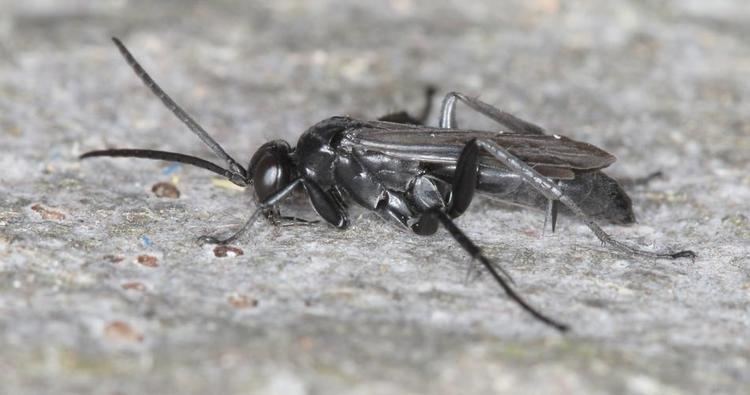Rank Species | Superfamily Vespoidea | |
 | ||
Similar Anoplius, Arachnospila, Evagetes, Caliadurgus fasciatellus, Episyron rufipes | ||
Anoplius nigerrimus
Anoplius nigerrimus is a spider wasp which is one of the commonest Pompilids in Europe. They are mostly black and the females are 6-8 mm long while male's measure 5-8 mm. A distinguishing feature of this species from the related Anoplius concinnus and Anoplius caviventris is that there are 20 hairs visible on the forehead rather than 60 or 45.
Contents
Anoplius nigerrimus hrabalka
Distribution
Northern and Central Europe eastwards across Asia to the Pacific Coast and in North America from the Yukon to Newfoundland. It is one of the commonest Spider Wasps found in Great Britain and Ireland.
Habitat
Unlike other species of the genus Anoplius A, nigerrimus does not show a preference for damp habitats and occurs in drier habitats such as grassland and scrub, the males are frequently encountered running over short vegetation.
Biology
The flight period in Great Britain is May to September, although in northern California adults have been collected in May, June and July. Prey collected by A nigerrimus include spiders from the families Lycosidae, Gnaphosidae and Pisauridae. A nigerrimus nests in a various situations includoing under stones, cavities in stone walls, in hollow plant stems, deserted burrows of ants, bees and wasps and empty snail shells. It can also dig its own burrow and build cells in friable soil. One nest of four cells was found under a stone on moorland at an altitude of 400 m in Glen Tilt, near Blair Atholl, Perthshire. Flowers visited include umbellifers such as wild carrot and Heracleum sphondylium. The chalcid wasp, Tetrastichus pompilicola has been reared from larvae of Anoplius nigerrimus in Newfoundland.
